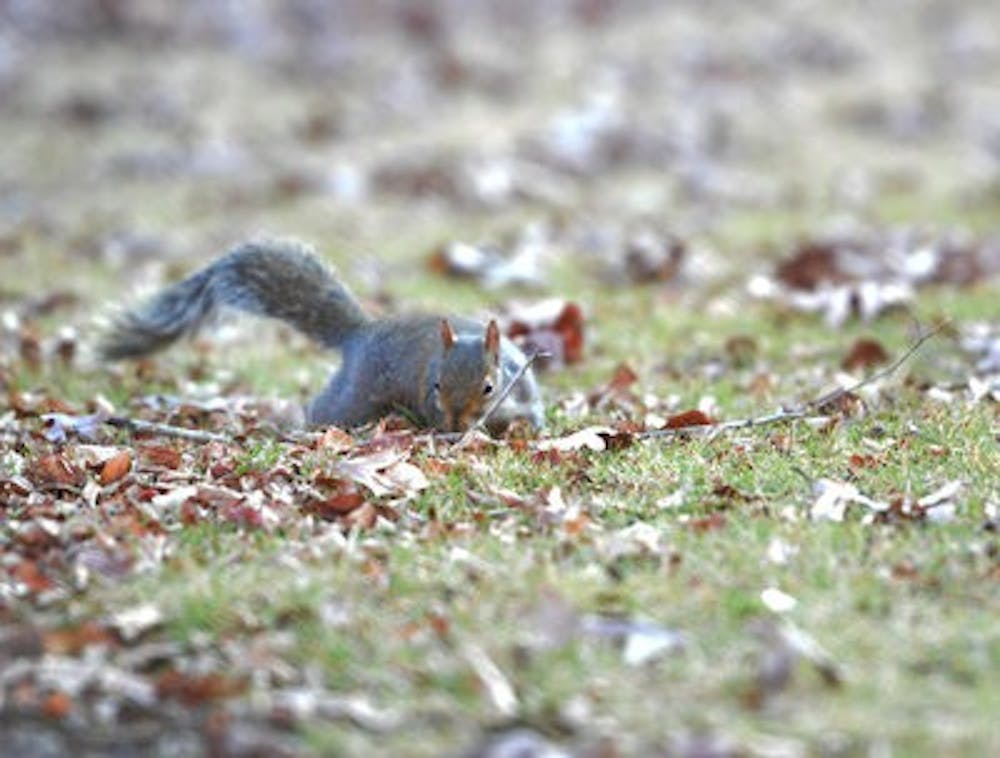The next time you are walking across campus and spot a squirrel, sit down and start listening to them.
Robert Lishak, associate professor in biological sciences, is researching how squirrels communicate with each other.
"We were interested in seeing how these acoustic signals that squirrels make, make contextually significant to a predator," Lishak said. "What was the message that they were sending?"
Lishak and his students use software that turns barks into jagged lines known as spectrograms, which show the sound's duration and frequency.
"We used a series of model and live cats, and the squirrels would start relaying to the potential predators that they have been spotted," Lishak said. "The squirrels were letting the predator know that they know you are present. The cat would get up, stop stalking and then walk away."
Lishak, who is on the verge of retirement, has been teaching at Auburn since 1976, with his specialization being the study of behavior of animals along with the acoustic behaviors of animals.
Lishak graduated from Seton Hall University with honors, and went on to earn his Ph.D. in zoology at Ohio State University.
In a Q&A with The Washington Post, Lishak answered questions about his studies.
Asked if squirrels really had a language, Lishak said, "Don't think of squirrel calls as being the equivalent of our words. Instead, think of these sounds as signals that squirrels innately respond to, like you would jump if startled by someone slamming a door."
Communication during mating between two adults is also important, along with a mother with its young.
"What is interesting is how the adults communicate during mating season and how mothers communicate to their young when nursing in the nest," Lishak said.
Tooth chattering is also used as an aggressive signal, with it being a warning sign to other squirrels.
"Let's say you have a squirrel in a fountain," Lishak said. "If another squirrel approaches, he or she will determine whether or not they are the dominant one. If they are, they will start to posture and chatter their teeth as a warning sign to go away."
What if the submissive squirrel doesn't obey?
"The squirrel will stick its teeth into the other," Lishak said.
The squirrels also communicate with each other, letting others know of the location of a predator.
Stating that you can do this even in your own backyard, Lishak said the next time you see a squirrel, starting doing a rapid "kuk-kuk-kuk," and the squirrel will alert you to where the predator is located.
"Just follow their tail and it will tell you where the danger is," Lishak said.
Jordan Wampler, a senior in English literature, said he performs this trick a lot in his yard.
"I put my cat out there and make the noise," Wampler said. "The squirrel was also correct in pointing me toward my cat. It amazes me."
According to a study by Richard Bicknell of the City of Palo Alto, California, the vocalizations of a squirrel range in frequency from .01 to 10 kilohertz and can range from a chirp to a long series of barks, screams and purrs.
As far as the dominant structure in squirrels, Lishak said it goes in this order.
"Adult male, adult female, young male and then young female," Lishak said.
Students on campus were intrigued by the idea of communicating with squirrels, and some students laid out what they would ask if able to talk to squirrels around campus.
"I would ask if they could sneak into the football games and watch," said Jessica Bloom, senior in psychology, jokingly. "Actually, I would ask about their daily routines and nesting rituals."
Do you like this story? The Plainsman doesn't accept money from tuition or student fees, and we don't charge a subscription fee. But you can donate to support The Plainsman.





